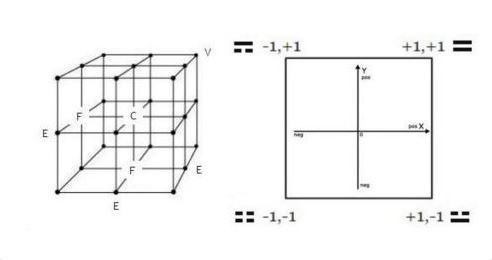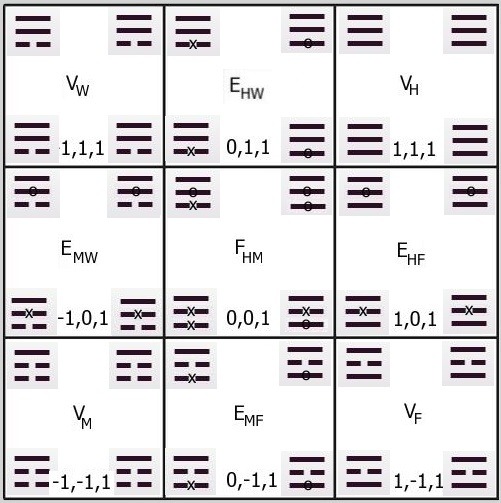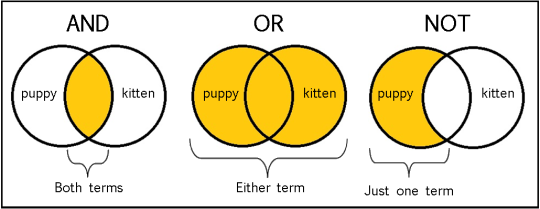#book of changes
Beyond Taoism - Part 5
A Vector-based Probabilistic
Number System
Part II


(continued from here)
Taoism and the primordial I Chingare in agreement that temporal changes have two different aspects: sequent and cyclic. Western thought in general follows suit. The I Ching differs from the other two in asserting that the direction of change - for both sequent and cyclic change - is fully reversible, with the proviso that sufficiently small units of measurement are involved.[1] The probability that reversal can be achieved diminishes proportionately to the magnitude of change that has taken place.[2]
Taoist appropriation of bigrams and trigrams of the I Ching to model such phenomena as change of seasons and phases of the moon is plausible if not quite legitimate. The natural phenomena so modeled are macroscopic and vary continuouslyandinexorably throughout an ever-repeating cyclic spectrum. And there’s the rub.

As they occur and function in the I Ching bigrams and trigrams are dicontinuous discrete elements, formed by other similarly discontinuous discretized entities, and they follow evolutionary courses which are most often nonrepetitive. So the Taoist usage is misleading at best, annihilative at worst. Unfortunately, as the I Ching itself evolved through centuries of commentaries and reinterpretations, it became ever more contaminated and tainted by these Taoist corruptions of meaning, at the same time that it was being inundated by Confucian sociological and ethical reworkings. What we have today is an amalgam, the various parts of which do not sit well with one another.[3]
Though it may in part be hyperbole to prove a point, the stark difference between the two approaches, that of Taoism and that of the I Ching, is epitomized by comparison of the Taoist diagram of the cycle of seasons with diagrams at the top and bottom of the page, which are based on the number, logic, and coordinate systems of The Book of Changes.[4] The increased complexity of the latter diagrams should not prove a stumbling block, as they can be readily understood in time with focus and attention to detail. The important take-away for now is that in the I Ching bigrams exist within a larger dimensional context than the Taoist diagram avows, and this context makes all their interactions more variable, conditional, and complex. As well, the same can be said of trigrams and hexagrams.
One of the more important aspects of these differences has to do with the notion of equipotentiality. As bigrams and trigrams function within higher dimensional contexts in the I Ching, this introduces a possibility of multiple alternative paths of movement and directions of change. Put another way, primordial I Ching logic encompasses many more degrees of freedom than does the logic of Taoism.[5] There is no one direction or path invariably decreed or favored. An all-important element of conditionality prevails. And that might be the origin of what quantum mechanics has interpreted as indeterminism or chance.
Next up, a closer look at equipotentiality and its further implications.

Section FH(n)[6]
(continuedhere)
Notes
[1] There are exceptions. Taoist alchemy describes existence of certain changes that admit reversibility under special circumstances. Other than the Second Law of Thermodynamics (which is macroscopic in origin, not result of any internally irreversible microscopic properties of the bodies), the laws of physics neglect all distinction between forward-moving timeandbackward-moving time. Chemistry recognizes existence of certain states of equilibrium in which the rates of change in both directions are equal. Other exceptions likely occur as well.
[2] Since change is quantized in the I Ching, which is to say, it is divided into small discretized units, which Line changes model, the magnitude of change is determined by the number of Line changes that have occurred between Point A and Point B in spacetime. Reversal is far easier to achieve if only a single Line change has occurred than if three or four Lines have changed for example.
[3] Ironically, Taoism itself has pointed out the perils of popularity. Had the I Ching been less popular, less appealing to members of all strata of society, it would have traveled through time more intact. Unless, of course, it ended up buried or burned. What is fortunate here is that much of the primordial logic of the I Ching can be reconstructed by focusing our attention on the diagrammatic figures and ignoring most of the attached commentary.
[4] These diagrams do not occur explicitly in the I Ching. The logic they are based on, though, is fully present implicitly in the diagramatic structural forms of hexagrams, trigrams, and bigrams and the manner of their usage in I Ching divinatory practices.
[5] Or, for that matter, than does the logic of Cartesian coordinate space if we take into account the degrees of freedom of six dimensional hexagrams mapped by composite dimensional methodology to model mandalic space. (See Note [4] here for important related remarks.)
[6] This is the closest frontal section to the viewer through the 3-dimensional cube using Taoist notation. See here for further explanation. Keep in mind this graph barely hints at the complexity of relationships found in the 6-dimensional hypercube which has in total 4096 distinct changing and unchanging hexagrams in contrast to the 16 changing and unchanging trigrams we see here. Though this model may be simple by comparison, it will nevertheless serve us well as a key to deciphering the number system on which I Ching logic is based as well as the structure and context of the geometric line that can be derived by application of reductionist thought to the associated mandalic coordinate system of the I Ching hexagrams. We will refer back to this figure for that purpose in the near future.
© 2016 Martin Hauser
Please note: The content and/or format of this post may not be in finalized form. Reblog as a TEXT post will contain this caveat alerting readers to refer to the current version in the source blog. A LINK post will itself do the same. :)
Scroll to bottom for links to Previous / Next pages (if existent). This blog builds on what came before so the best way to follow it is chronologically. Tumblr doesn’t make that easy to do. Since the most recent page is reckoned as Page 1 the number of the actual Page 1 continually changes as new posts are added. To determine the number currently needed to locate Page 1 go to the most recent post which is here. The current total number of pages in the blog will be found at the bottom. The true Page 1 can be reached by changing the web address mandalicgeometry.tumblr.com to mandalicgeometry.tumblr.com/page/x, exchanging my current page number for x and entering. To find a different true page(p) subtract p from x+1 to get the number(n) to use. Place n in the URL instead of x (mandalicgeometry.tumblr.com/page/n) where
n = x + 1 - p. :)
-Page 300-
Neo-Boolean - II: Logic Gates
Thinking Inside the Lines

(continued from here)
We have already looked briefly at three of the more important Boolean operators or logic gates: AND, OR,andXOR.NOT just toggles any two Boolean truth values (true/false; on/off; yes/no). Here we introduce two new logic gates which do not occur in Boolean algebra. Both play an important role in mandalic geometry though.
We’ll refer to the first of these new operators or logic gates as INV standing for inversionorinvert. This is similar to Boole’s NOT except that it produces toggling betweeen yang/+ and yin/- instead of 1 and 0. Because it is based on binary arithmetic, Boole’s NOT has been thought of as referring to inversion also (as in ONorOFF). Although both ANDandINV act as toggling logic gates they have very different results in the greater scheme of things, since nature has created a prepotent disparity between a -/+ toggle and a 0/1 toggle in basic parameters of geometry, spacetime, and being itself. This makes Boole’s AND just a statement of logical opposition, notinversion.
Recognition of this important difference is built into mandalic geometry structurally and functionally, as it is also into Cartesian coordinate dynamics and the logic of the I Ching, but lacking in Boole’s symbolic logic. This is necessarily so, as there is no true negative domain in Boolean algebra. The OFF state of electronics and computers, though it may sometimes be thought of in terms of a negative state, is in fact not. It relates to the Western zero (0), not the minus one of the number line. Where Boolean algebra speaks of NOT 1 it refers specifically to zero and only to zero. When mandalic geometry asserts INV 1 it refers specifically to -1 and only to -1 . The inversion of yang then is yin and the inversion of yinisyang.[1] In the I Ching, Taoist thought, and mandalic geometry the two are not opposites but complements and, as such, interdependent.
The second added logic gate that will be introduced now is the REV operator standing for reversionorrevert. This operator produces no change in what it acts upon. It is the multiplicative identity element (also called the neutral elementorunit element), as INV is the inverse element. In ordinary algebra the inverse element is -1, while the identity element is 1. In mandalic geometry and the I Ching the counterparts are yinandyang, respectively. If Boolean algebra lacks a dedicated identity operator, it nonetheless has its Laws of Identity which accomplish much the same in a different way:
- A = A
- NOT A = NOT A
Again, Boolean algebra has no true correlate to the INV operator. There can be no sign inversion formulation as it lacks negatives entirely. Although Boolean algebra may have served analog and digital electronics and digital computers quite well for decades now, it is incapable of doing the same for any quantum logic applications in the future, if only because it lacks a negative domain.[2] It offers up bits readily but qubits only with extreme difficulty and those it does are like tears shed by crocodiles while feeding.
(to be continued)
Image: Boolean Search Operators. [Source]
Notes
[1] Leibniz’s binary number system, on which Boole based his logic, escapes this criticism, as Leibniz uses 0 and 1 simply as notational symbols in a modular arithmetic and not as contrasting functional elements in an algebraic context of either the Boolean or ordinary kind.
In the field of computers and electronics, Boolean refers to a data type that has two possible values representing true and false. It is generally used in context to a deductive logical system known as Boolean Algebra. Binary in mathematics and computers, refers to a base 2 numerical notation. It consists of two values 0 and 1. The digits are combined using a place value structure to generate equivalent numerical values. Thus, both are based on the same underlying concept but used in context to different systems. [Source]
[2] Moreover, I expect physics will soon enough discover that what it now calls antimatter is in some sense and to some degree a necessary constituent of ordinary matter. I can already hear the loudly objecting voices declaring matter and antimatter in contact necessarily annihilate one another, but that need not invalidate the thesis just proposed. My supposition revolves around the meaning of “contact” at Planck scale and the light speed velocity at which subatomic particles are born, interact and decay only to be revived again in an eternal dance of creation and re-creation. Material particles exist in some kind of structural and functional homeostasis, not all that unlike the anabolic and catabolic mechanisms that by means of negative feedback maintain all entities of the biological persuasion in the steady state we understand as life. Physics has yet to get a full grip on this aspect of reality, though moving ever closer with introduction of quarks and gluons to its menagerie of performing particles.
© 2016 Martin Hauser
Please note: The content and/or format of this post may not be in finalized form. Reblog as a TEXT post will contain this caveat alerting readers to refer to the current version in the source blog. A LINK post will itself do the same. :)
Scroll to bottom for links to Previous / Next pages (if existent). This blog builds on what came before so the best way to follow it is chronologically. Tumblr doesn’t make that easy to do. Since the most recent page is reckoned as Page 1 the number of the actual Page 1 continually changes as new posts are added. To determine the number currently needed to locate Page 1 go to the most recent post which is here. The current total number of pages in the blog will be found at the bottom. The true Page 1 can be reached by changing the web address mandalicgeometry.tumblr.com to mandalicgeometry.tumblr.com/page/x, exchanging my current page number for x and entering. To find a different true page(p) subtract p from x+1 to get the number(n) to use. Place n in the URL instead of x (mandalicgeometry.tumblr.com/page/n) where
n = x + 1 - p. :)
-Page 304-
